国家眼部疾病临床医学研究中心
国家临床重点专科
上海市重中之重临床医学中心
上海市眼科研究所
上海市眼底病重点实验室
欧洲杯竞猜平台眼科研究所
眼科临床医学中心由我国著名眼科学家、视网膜脱离手术和研究创始人、人称“东方一只眼”的赵东生教授于1948年创立。经过赵东生、张皙、许迅等几代学科带头人的共同努力,目前正向国际先进的眼科中心迈进。在“2014年度中国医院科技影响力排行榜”上,在全国医院眼科影响力排行第七位。
眼科临床医学中心是国家临床重点专科、上海市重中之重临床医学中心、上海市眼科研究所、上海市眼底病重点实验室、欧洲杯竞猜平台眼科研究所、上海市眼科住院及专科医师培训基地、欧洲杯竞猜平台眼科学博士点、博士后流动站、南京医科大学眼科学博士点、博士后流动站。欧洲杯竞猜平台眼科及视觉科学系所在地。孙晓东教授获国家杰青、长江学者荣誉称号。
目前,眼科临床医学中心拥有博士生导师8人,硕士生导师14人,硕士及以上学历占95%。
眼科临床医学中心包括北部、南部和眼防中心在内,共拥有核定床位214张。
眼科临床医学中心的传统强项在于视网膜脱离、糖尿病视网膜病变和老年性黄斑变性等眼底病的临床诊断和治疗。近年来,白内障、青光眼、屈光不正、角膜病、斜弱视等疾病的临床水平也达到国内领先或先进水平,开展的国际先进临床技术包括微创玻璃体切割手术、抗眼部新生血管治疗、多焦点可调节新型人工晶体植入等。
2012年,眼科临床医学中心托管上海市眼病防治中心(市级专科医院),自此,眼科临床医学中心成为国内唯一的“医、教、研、防”四位一体的眼科专科。2014年,眼科临床医学中心联合上海市眼病防治中心共同挂牌“上海市眼科医院”。2014年,欧洲杯竞猜平台眼科与视觉科学学系成立。
除了精湛的临床诊疗技术,眼科临床医学中心的临床科研水平也处于全国领先地位。至今,眼科临床医学中心已完成了“十一五”“十二五”国家重点、重大科技支撑项目、国家自然科学基金重点项目等国家及省部级课题52项,获得国家科技进步二等奖、 华夏科技奖一等奖、 中华医学奖二、 三等奖、上海市科技进步一、二、三等奖等26项,国家专利24项,在国内外权威学术期刊上发表论文327篇。
眼科临床医学中心负责人包括:学科带头人及中心主任许迅,中心常务副主任(兼)孙晓东,中心副主任(兼)、白内障科主任(北部)邹海东,中心副主任(兼)、眼底及视网膜科副主任 (北部)刘堃,白内障科副主任(北部)邱庆华,青光眼及视神经科主任(北部)吴星伟,视光/屈光/眼表科主任(北部)柯碧莲,眼科主任(南部)郑志,眼科副主任(南部)孙涛。
亚专科
眼底病专科
眼底病专科由享有“东方一只眼”盛誉的赵东生教授于1949年创立,是我国第一个眼底病专科,在我国率先开展视网膜脱离诊治和手术。学科现任负责人为中华医学会眼科学分会眼底病学组组长许迅教授,拥有专家16名,其中博士生导师6名,硕士生导师5名。常规开展各种玻璃体视网膜疾病、糖尿病视网膜病变及其合并症的手术治疗、老年性黄斑变性等新生血管性眼底病的中西医结合综合治疗,如23G微创玻璃体切割术、黄斑疾病手术、玻璃体腔内注药术等,获得国内同行和病友的广泛赞誉。
青光眼与视神经专科
主要开展各类青光眼与视神经疾病的诊治。学科拥有主任医师1名、副主任医师3名,博士生导师与硕士生导师各1名,负责人为上海市眼科学会神经眼科学组组长吴星伟教授。临床常规开展虹膜周边切除术、小梁切除术、小梁切开术、选择性激光小梁成型术、激光虹膜成型术、引流植入物手术、激光睫状体光凝术治疗各种难治性青光眼、超声乳化白内障摘除联合小梁切除术等。应用中西医结合方法对青光眼的神经保护以及对视神经炎、缺血性视神经病变等疾病的治疗,获得病友的广泛好评。
白内障专科
白内障专科成立于1998年,主要开展各类晶状体病及合并症的诊断和治疗。首任组长为知名眼科专家、上海眼科学会白内障学组资深组员郑高欣教授。2013年,在该专业组基础上,正式成立了白内障科,现任负责人为邹海东教授。该学科目前拥有专家8名,其中正主任医师6名,副主任医师2名。常规开展各种白内障及其合并症的药物和手术治疗,如微小切口白内障超声乳化吸除术、特殊人工晶体植入术、脱位晶体手术等,获得病友的广泛好评。
视光/屈光/眼表专科
视光/屈光/眼表专科成立于2004年,角膜专业组成立于2001年,现任负责人为柯碧莲教授。经过十余年的持续发展,已经成为由视光内外科,眼表病区,眼库等组合的临床科研平台。学科拥有一流的团队,医生均具有博士学位及海外留学经历,现有博士生导师1人,硕士生导师2人。常规开展的手术包括各种个性化的近视眼激光手术、眼内镜片植入术治疗复杂性超高度近视,角膜移植术,羊膜移植术及斜视手术等,临床疗效显著 ,获得病家的一致好评。近年来承担国家“十二五”及上海市青少年近视防治等多项临床研究项目,相关成果获上海市医学科学奖。
· Vision Recovery Center (Department of Ocular Fundus Disease, Department of Glaucoma, Department of Cataract, Department of Optometry/Ocular Surface disease, Department of Orbital Disease and Ophthalmic Plastics, Department of Preventive Ophthalmology)
· 1.Departments:
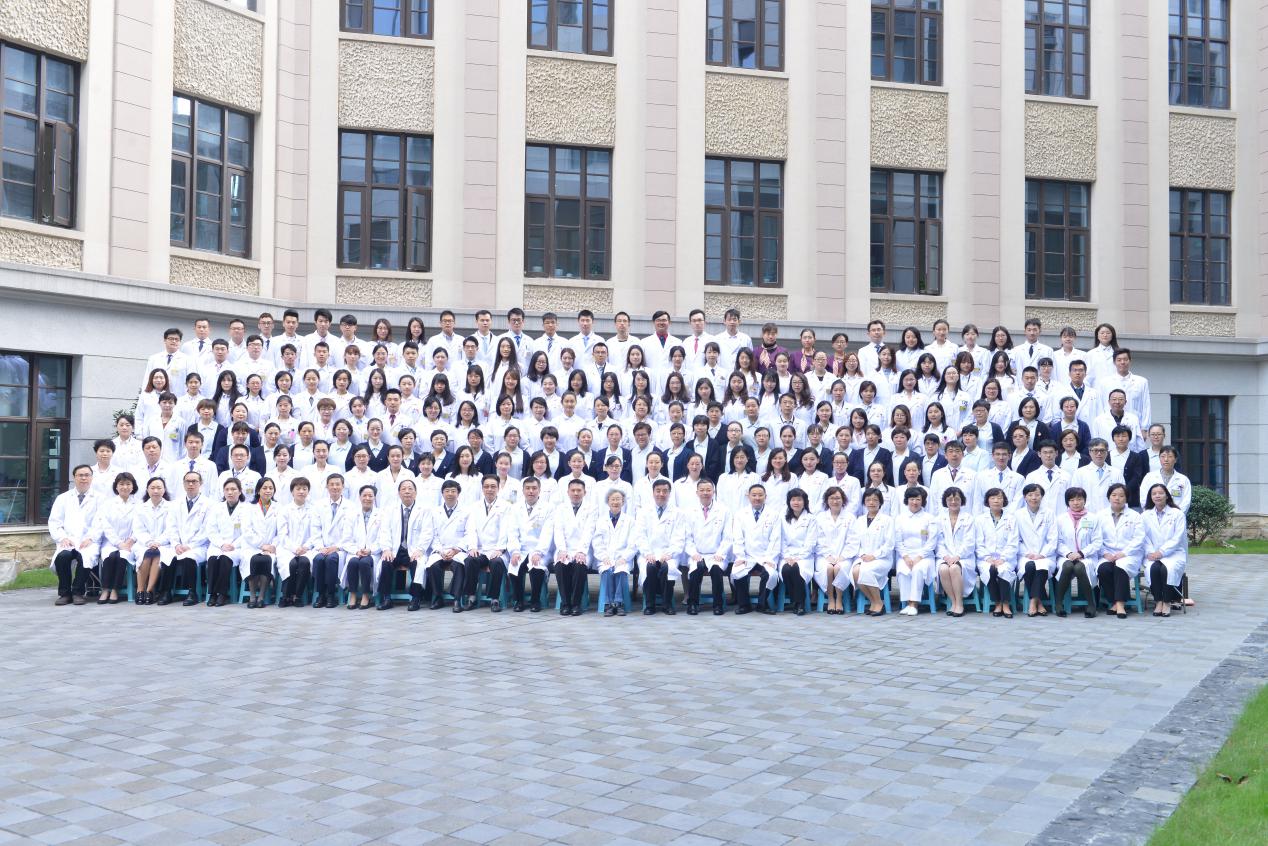
· National Clinical Research Center for Eye Diseases
· National Key Clinical Specialty
· Shanghai Municipal Clinical Medical Center for Vision Recovery
· Shanghai municipal key discipline in leading medicine major
· Shanghai Municipal Eye Institute
Shanghai Jiao Tong University Eye Institute
·
· Vision Recovery Center
·
· The Vision Recovery Center of Shanghai General Hospital, former Ophthalmology Department of General Hospital, was founded in 1948 by Professor Zhao Dongsheng, an ophthalmologist and the originator of retinal detachment surgery and research in China. He was renowned as "Oriental Eye". Through the joint efforts of several generations including Professor Zhao Dongsheng and Professor Zhang Xi, the Ophthalmology Department was booming. The Department became Shanghai municipal eye institute in 1985; the place of cultivating graduate students majored in ophthalmology of Fudan University Shanghai Medical College in 1986; Shanghai key discipline of ophthalmology in leading medical major in 1995; Shanghai Key Laboratory of Ocular Fundus Diseases in 1998; the unique clinical medical center of ophthalmology of Shanghai Municipality - Clinical Medical Center for Vision Recovery, and the doctoral degree point and the post-doctoral station of ophthalmology of Shanghai Jiao Tong University in 2002; the training center of "Sight First China Action" of the Ministry of Health in East China and Shanghai Jiao Tong University Eye Institute in 2004; the national clinical pharmacy base of SFDA in 2007. In 2012, The Eye Image Reading Center and Biological Sample Bank of Shanghai Jiao Tong University were established. The same year, it was officially entrusted Shanghai Municipal Center for Eye Disease Prevention and Treatment (a municipal-level specialized hospital in eye disease control and prevention) for management. Under the 60-year unremitting endeavor by several generations of scholars, the Department now has established a "disease" oriented team medical diagnosis and treatment pattern and is capable of treating such difficult eye diseases as diabetic retinopathy, complicated cataract, keratonosus, strabismus and amblyopia. At present, integrating medicine, teaching and research, Ophthalmology has become the first-class discipline of Eye and Vision Science in domestic Grade-III Class-A general hospitals. The Department has more than 160 beds. Its annual mean outpatient service quantity and surgical volumes are over 320,000 and 15,000, respectively. Its subspecialities include ocular fundus disease, cataract, glaucoma, corneal disease, refractive eye disease, strabismus, amblyopia and uveitis.
· In recent five years, the Vision Recovery Center has won the Key Project of National Natural Science Fund, Key Special Scientific Project of "12th Five-Year" Plan, National Key Technology R&D Program for the "11th Five-Year" Plan, 973 Subproject, 863 Project and 33 National Natural Science Funds, and has totally published 156 SCI papers. The research achievements were awarded more than 25 award such as First Prize for Shanghai Science and Technology Advancement 2007, Second State Science and Technology Awards 2008, First Prize for Huaxia Science and Technology Prize 2011 and over 20 provincial and municipal-level Technology Awards.
·
· Subspecialities
·
· The Subspeciality of Ocular Fundus Disease is composed of 17 people including Professor Xu Xun, Sun Xiaodong and Zheng Zhi. There are four doctoral supervisors. Those with doctorate and those with overseas study experience account for 82% and 76%, respectively. In particular, three persons are included into the talent plan of the Ministry of Personnel and the Ministry of Education and two persons are leading talents of Shanghai Municipality. Professor Xu Xun is the Vice Chairman of Chinese Ophthalmological Society, , chairman of Chinese Ocular Fundus Disease Group and Chairman of Shanghai Municipal Ophthalmological Society; Professor Sun Xiaodong is the Committee Member of Chinese Ophthalmological Society and Vice Chairman of Shanghai Municipal Ophthalmological Society.
· The Subspeciality of Cataract and Glaucoma comprises 10 persons under the leadership of Doctoral Supervisor Zou Haidong, including seven persons with senior professional titles and 87% postgraduates. That selected into Shanghai Rising-Star Program, Rising-Star Follow-Up, Pujiang Talent and Excellent Leaders in Health System Plan is one person each. Professor Zou Haidong is the Vice Chairman of National Blindness Prevention and Epidemiology of Chinese Ophthalmological Society, Vice Chairman of the Ophthalmology Branch of China Ultrasonic Engineering Association, Committee Member of Shanghai Ophthalmological Society of Chinese Medical Association.
· The Subspeciality of Optometry, corneal disease, Strabismus and Amblyopia comprises 5 persons under the leadership of Doctoral Supervisor Ke Bilian, including three persons with senior professional titles. All of the five persons are postgraduates. Professor Ke Bilian is the Member of Optometry Society of Shanghai Medical Association and Deputy Head of Dioptrics Group of Shanghai Ophthalmological Society.
·
· Subspeciality of Fundus Disease in Medicine and Surgery
· This specialty, founded by Professor Zhao Dongsheng in 1949, is the first domestic Specialty of Fundus Disease in Medicine and Surgery. With four Doctoral Supervisors and two master's supervisors, it opens up the retinal detachment treatment and operation. It conducted operations for the rhegmatogenous and traumatic retinal detachment (RD) combined with proliferative vitreoretinopathy early in China in 1980s. And domestic small package of C3F8 gas for intraocular injection as substitution of vitreous body was invented by Professor Zhang Xi in the early 1990s and was manufactured and applied to 256 units across 28 provinces and cities, totally over 20,000 cases, which fills the gap both home and abroad. This specialty conducted complicated RD diagnosis and treatment study to improve the success rate of operation to 94%, an international leading level; treated giant retinal tears by combining heavy water and gas injection with a success rate of 92% in the late 1990s; created double-ring buckling procedure to treat the recurrent retinal detachment with a success rate of 89%; improved the classic encircled pressure procedure method to shorten the operation time by 35%. It launched internationally leading minimally invasive vitreoretinal surgery to treat the complicated retinal detachment, infectious endophthalmitis, diabetic retinopathy and various macula diseases in recent years, with a minimally invasive surgery performance rate of 92% and overall success rate of 98%. A series of vitreoretinal procedure regulations won eight technology awards including the Second Prize of China Medical Technology, the First Prize of Shanghai Clinical Medical Achievement and Award of Clinical Medical Achievement Promotion. Its operations for tractive retinal detachment caused by proliferative diabetic retinopathy have a success rate of 92% and won the Second State Science and Technology Awards.
· In terms of the treatment of the fundus disease in medicine, it performed PDT treatment and anti-VEGF treatment for more than 3,700 cases of neovascular eye diseases early in China. It treated the difficult fundus disease with both traditional Chinese and western medicine and meanwhile continuously introduced and improved the fundus disease diagnosis and treatment technology, established evaluation methods for the visual functions such as retina thickness and microperimetry, conducted treatment under microperimetry and ICGA guidance, retained fixation point, combined PDT and anti-VEGF to treat PCV and other fundus disease and won the Second and Third Prize of Shanghai Science and Technology Advancement.
·
· Subspeciality of Cataract and Glaucoma
· All doctors under this subspeciality have doctor or master's degree. There are eight physicians with senior professional title, one doctoral supervisor and two master's supervisors, serving as senior Deputy Head and Secretary of Shanghai Glaucoma Group and Cataract Group. They conduct nearly 8,000 operations and have outpatient quantity about 80,000. It has many advanced glaucoma equipments like anterior and posterior segment OCT, UBM, DCT,HRT, static and dynamic sight apparatus, several sets of the latest ultrasonic emulsification equipments like Infiniti and Signiture, and many cataract-related equipments such as IOL Master. So far, it is able to perform various regular glaucoma operations, congenital glaucoma and refractory glaucoma surgeries including neovascular glaucoma, various complicated cataract operations, many types of new intraocular lens implantation procedures, combined cataract ultrasonic emulsification surgeries, combined posterior segment operations like vitreoretinal surgery and conduct comprehensive treatment for refractory glaucoma. In recent years, as the laser technology develops, in addition to the traditional laser peripheral iridectomy, it carried out numerous new laser treatment methods for glaucoma, such as selective laser trabeculoplasty and ciliary body photocoagulation under microscopic endoscope. The quantity of complicated cataract operations performed each year ranks in the top three and increases year by year. After the cataract operation, the visual recovery rate reaches nearly 99% and the rate of rehabilitation from disability is up to 92%.
·
· The Subspeciality of Optometry, Corneal disease, Strabismus and Amblyopia:
· Now it has six physicians with senior professional title, one doctoral supervisor and one master's supervisor, including senior Deputy Head and Secretary of Optometry, Corneal disease, Strabismus and Amblyopia Group of Shanghai Ophthalmological Society. Their daily clinical work includes amniotic membrane transplantation, punctual plugs transplanting in lacrimal duct and palpebral fissure closing procedure. Its annual outpatient visits and surgery quantity are up to 30,000 and 500 cases. Concentrated in Shanghai, its service scope has radiated to many of the surrounding areas. Meanwhile, there are also patients from Hong Kong, Macao, UK, Italy, Japan, Australia, Canada and US. In recent years, they made a large number of exploratory researches on the pathogenesis of amblyopia, including the function of the brain neurotransmitter in causing amblyopia and the brain function imaging study of amblyopia; they attach importance to the comprehensive recovery of visual function, and to recover the effective visual performance. They can successfully restore the visual system of the patient with amblyopia by comprehensive nursing like perceptual learning training. In the meantime, they apply synoptophore to rebuild the visual function that fails to develop due to ablepsia and conduct individualized amblyopia treatment and binoculus visual training with the help of the comprehensive therapy apparatus. As for paralytic strabismus, they put an emphasis on the individualized operation plan. In recent years, they cured numerous complicated paralytic, vertical, rotatory and dissocited strabismus with comprehensive treatment method by combined surgery and individualized overall design plan. They performed nearly 300 strabismus surgeries in recent three years, producing significant clinical effect. The Subspeciality undertook several projects on controlling and preventing juvenile myopia by early screening and myopia control and prevention for juvenile strabismus and amblyopia.
2. Diagnosis and Treatment Characteristics
Clinical Features
Routine operations
(1)Complicated retinal detachment, tractive retinal detachment caused by diabetic retinopathy, traumatic retinal detachment and operations on vitreous for various macular diseases;
(2)Minimally invasive vitrectomy and micro-incision phacoemulsification for cataract;
(3)Treatment of fundus disease with traditional Chinese medicine and western medicine;
(4)Complicated cataract operation with lens dislocation and complication after combination;
(5)Keratoplasty and limbal stem cells transplantation;
(6)Refractory glaucoma surgeries: neovascular glaucoma treatment, drainage valve implantation surgery and treatment of various complicated secondary glaucoma;
(7)Various diopter correction and children strabismus & amblyopia surgeries;
(8)Eye Neoplasm excision and eye socket restoration and rebuilding after fracture.
In particular, the clinical research and therapy of complicated retinal detachment and the pathogenesis study, clinical control and prevention level of diabetic retinopathy have reached domestic leading and international advanced level. Regarding to treating the refractory fundus disease by combining traditional Chinese medicine and western medicine, they apply water seepage to remove dampness and activate blood circulation to dissipate stasis. In the 1960s, they created the first Chinese patent medicine omentum I and omentum II, which significantly improved the visual function after retinal detachment surgery and was popularized in many hospitals of the country; in the 1990s, they developed Chinese patent medicine macula lutea I by applying modern medical diagnosis technology and combining the theory of traditional Chinese medicine. It has become an effective adjuvant therapy for treating refractory fundus diseases such as age-related macular degeneration and high myopia related macular degeneration. The prescriptions mentioned above which reach domestic leading level have been clinically proven effective and officially approved by the Food and Drug Administration for production.
3. Academic Leaders
Xu Xun (Ophthalmology Department)
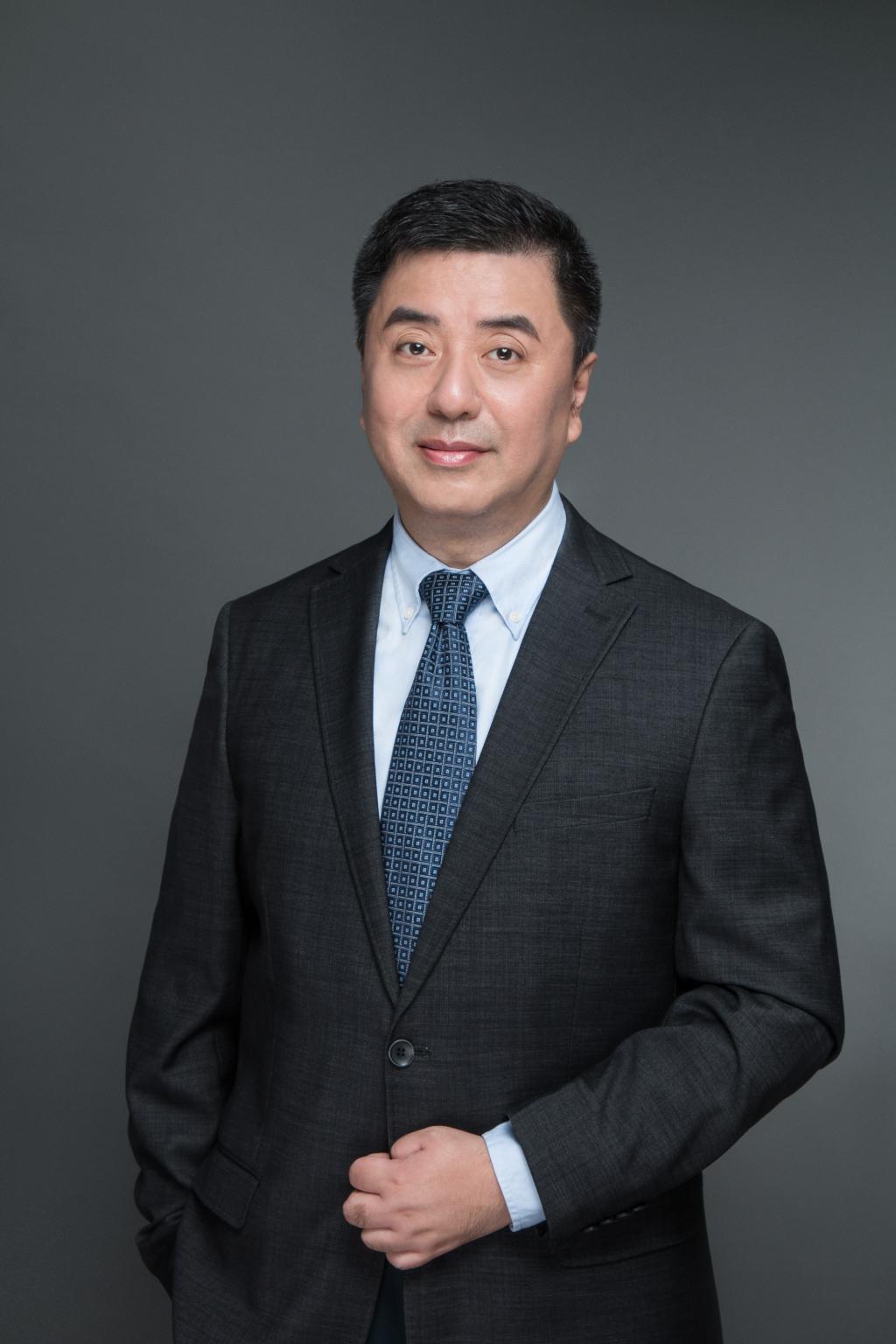
Director of Shanghai Municipal Clinical Medical Center for Vision Recovery
Executive Director of Shanghai Municipal Center for Eye Disease Prevention and Treatment
Director of Eye Institute of Shanghai Jiao Tong University
Master of Medicine, Chief Physician, Professor, Doctoral Supervisor
Vice Chairman of Chinese Ophthalmological Society, Chairman of Fundus Disease Group and Chairman of Shanghai Municipal Ophthalmological Society; Associate Editor-in-Chief of Chinese Journal of Ocular Fundus Diseases, Associate Editor of Chinese Journal of Optometry Ophthalmology and Visual Science, Editorial Board Member of Chinese Journal of Ophthalmology, Editorial Board Member of Ophthalmologica and Contract Reviewer of Diabetes and IOVS. With abundant experience in fundus disease treatment, he is able to blaze new trails in a pioneering spirit by responding to complicated and major clinical problems and treating difficult and complicated diseases. His team under his leadership won one Second State Science and Technology Awards, two First Prizes and 12 Second and Third Prizes for provincial (ministerial)-level Scientific and Technological Advancement. He has been selected as the national candidate of "Hundred, Thousand and Ten Thousand Talent Project" of the Ministry of Personnel and Shanghai Municipal Leading Talent Plan. In addition, he was granted special government allowance by the State Council and the title of Young and Middle-Aged Expert with Outstanding Contribution by the Ministry of Health.
4. The Team

· Name:Xu Xun
· Professional Title: Chief Physician, Professor, Doctoral Supervisor
· Specialties:
Vitreoretinal disease, ocular neovascular disease and ocular inflammation
· Department: Vision Recovery Center
· Appointment
·
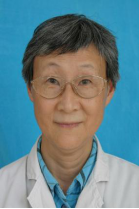
· Name: Zhang Xi
· Professional Title: Chief Physician, Professor, Doctoral Supervisor
· Specialties:
Retinal detachment, ocular traumas and fundus disease diagnosis and research, especially great at vitreoretinal surgery
· Department: Vision Recovery Center
· Appointment
·
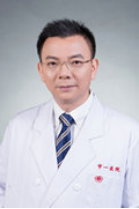
· Name: Sun Xiaodong
· Professional Title: Chief Physician, Professor, Doctoral Supervisor
· Specialties:
Diagnosis and treatment and microsurgery for fundus diseases such as retinal detachment, diabetic retinopathy and age-related macular degeneration
· Department: Vision Recovery Center

· Name: Zou Haidong
· Professional Title: Chief Physician, Professor, Doctoral Supervisor
· Specialties:
Diagnosis and treatment of cataract, epidemiology and prevention of blindness and eye disease and many large and middle-sized complicated ophthalmologic operations like vitreoretinal microsurgery
· Department: Vision Recovery Center
· Appointment
·

· Name: Zheng Zhi
· Professional Title: Chief Physician, Professor, Doctoral Supervisor
· Specialties:
Retinal detachment, diabetic ophthalmopathy, ocular traumas and fundus disease diagnosis and treatment
· Department: Vision Recovery Center
· Appointment
·
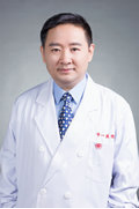
· Name: Liu Kun
· Professional Title: Chief Physician, Associate Professor, Master's Supervisor
· Specialties:
Diabetic retinopathy and age-related macular degeneration, retinal detachment and cataract diagnosis and treatment
· Department: Vision Recovery Center
· Appointment
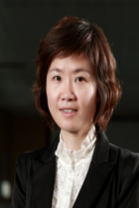
· Name: Ke Bilian
· Professional Title: Chief Physician, Professor, Doctoral Supervisor
· Specialties:
Excimer laser refractive operation, control of adolescent ametropia and diagnosis and treatment of ocular surface diseases such as xerophthalmia and cornea and conjunctiva diseases
· Department: Vision Recovery Center
· Appointment
·
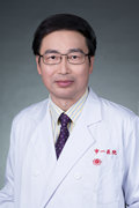
· Name: Wu Xingwei
· Professional Title: Chief Physician, Professor, Doctoral Supervisor
· Specialties:
Ophthalmic hemorrhagic diseases, maculopathy, ophthalmic nerve diseases and uvea diseases diagnosis and treatment
· Department: Vision Recovery Center
· Appointment
·
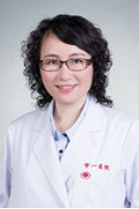
· Name: Chen Feng'e
· Professional Title: Chief Physician
· Specialties:
Complicated retinal detachment, diabetic retinopathy and cataract diagnosis and treatment
· Department: Vision Recovery Center
· Appointment
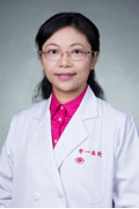
· Name: Fan Ying
· Professional Title: Chief Physician, Master's Supervisor
· Specialties:
Minimally invasive surgery and laser treatment for complicated retinal detachment, diabetic retinopathy and severe traumatic eyeball rupture, various maculopathies and ocular neovascular diseases
· Department: Vision Recovery Center
· Appointment
·
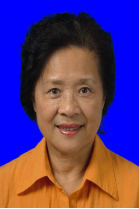
· Name: Qin Juanjuan
· Professional Title: Chief Physician, Professor
· Specialties:
Posterior eye segment surgery, retinal detachment, proliferative vitreous retinopathy, diabetic retinopathy, ocular tumor, eye traumas and intraocular foreign bodies diagnosis and treatment
· Department: Vision Recovery Center
· Appointment
·
· Name: Zheng Gaoxin
· Professional Title: Chief Physician, Professor
· Specialties:
Cataract, phacoemulsification, retinal detachment diagnosis and treatment
· Department: Vision Recovery Center
· Appointment
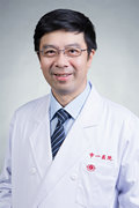
· Name: Cai Wenquan
· Professional Title: Chief Physician
· Specialties:
Retinal detachment, diabetic retinopathy, ocular trauma, fundus disease and ocular tumor diagnosis and treatment
· Department: Vision Recovery Center
· Appointment
·
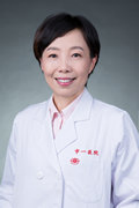
· Name: Sun Qian
· Professional Title: Chief Physician
· Specialties:
Diagnosis and surgical treatment of various cataracts
· Department: Vision Recovery Center
· Appointment
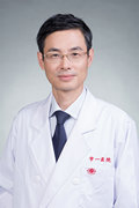
· Name: Miao Yuyu
· Professional Title: Chief Physician
· Specialties:
Diagnosis and treatment of cataract and crystalline lens diseases
· Department: Vision Recovery Center
· Appointment
·

· Name: Liu Yan
· Professional Title: Chief Physician, Master's Supervisor
· Specialties:
Diagnosis and treatment of cornea & conjunctiva diseases, dry eye, pterygium, chemical injury and thermal burn
· Department: Vision Recovery Center
· Appointment
· Appointment
·
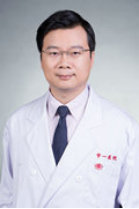
· Name: Qiu Qinghua
· Professional Title: Associate Chief Physician, Associate Professor, Master's Supervisor
· Specialties:
Surgical treatment for diseases such as retinal detachment, diabetic retinopathy, complicated eye traumas, macular hole and macular epiretinal membrane
· Department: Vision Recovery Center
· Appointment
·

· Name: Fu Yang
· Professional Title: Associate Chief Physician, Master's Supervisor
· Specialties:
Strabismus of the adult and children, especially complicated and refractory strabismus surgery; adolescent myopia prevention, control and correction; eye diseases of children and eye development diagnosis and treatment
· Department: Vision Recovery Center
· Appointment
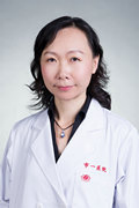
· Name: Gong Yuanyuan
· Professional Title: Chief Physician, Master's Supervisor
· Specialties:
Various maculopathies, retinal vasculopathies, uvea and ophthalmic nerve diseases diagnosis and treatment
· Department: Vision Recovery Center
· Appointment
·
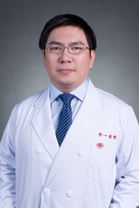
· Name: Tang Min
· Professional Title: Doctor of Medicine, Associate Chief Physician, Master's Supervisor
· Specialties: glaucoma, cataract, and ocular traumas diagnosis and treatment and various laser treatment
· Department: Vision Recovery Center
· Appointment
·
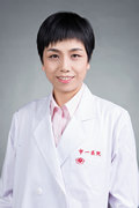
· Name: Wang Fenghua
· Professional Title: Chief Physician, Professor, Doctoral Supervisor
· Specialties:
Diabetic retinopathy, retinal vein occluson, retinal detachment and age-related macular degeneration treatment
· Department: Vision Recovery Center
· Appointment
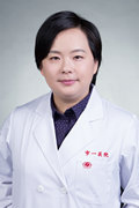
· Name: Cao Hui
· Professional Title: Associate Chief Physician
· Specialties:
Diabetic retinopathy follow-up, laser and surgical treatment
· Department: Vision Recovery Center
· Appointment
·
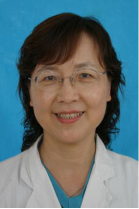
· Name: Cao Meifeng
· Professional Title: Associate Chief Physician
· Specialties:
Retinal detachment diagnosis and treatment
· Department: Vision Recovery Center
· Appointment
·
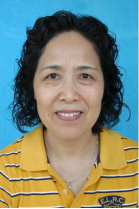
· Name: Fang Lizhen
· Professional Title: Associate Chief Physician
· Specialties:
Retinal detachment, eye traumas, plastic surgery and cataract
· Department: Vision Recovery Center
· Appointment
·
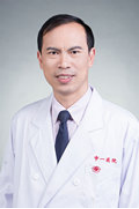
· Name: Fu Mingshui
· Professional Title: Associate Chief Physician
· Specialties:
Various glaucoma and cataract surgeries
· Department: Vision Recovery Center
· Appointment
·
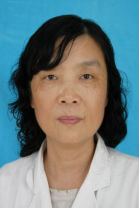
· Name: Li Peijuan
· Professional Title: Associate Chief Physician
· Specialties:
Complicated retinal detachment- treatment and vitrectomy
· Department: Vision Recovery Center
· Appointment
·
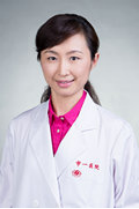
· Name: Liu Haiyun
· Professional Title: Chief Physician, Master's Supervisor
· Specialties:
Diagnosis and treatment of vitreoretinal diseases such as complicated retinal detachment, proliferative diabetic retinopathy, maculopathy cataract and eye traumas
· Department: Vision Recovery Center
· Appointment
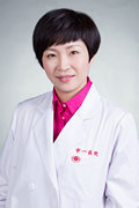
· Name: Wang Hong
· Professional Title: Chief Physician, Master's Supervisor
· Specialties:
Treatment of uveitis and its complications, laser treatment for fundus diseases
· Department: Vision Recovery Center
· Appointment
·

· Name: Wang Weijun
· Professional Title: Chief Physician
· Specialties:
Complicated vitreoretinal surgery, vitrectomy for severe diabetic retinopathy, operation of eye traumas, minimally invasive vitrectomy for maculopathy and eyelid reconstruction and plastic surgery
· Department: Vision Recovery Center
· Appointment
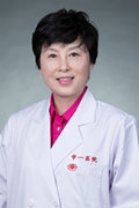
· Name: Wang Ying
· Professional Title: Associate Chief Physician
· Specialties:
Diagnosis and treatment of complicated glaucoma and cataract
· Department: Vision Recovery Center
· Appointment
·

· Name: Yu Suqin
· Professional Title: Associate Chief Physician
· Specialties:
Diagnosis and treatment of various vitreous body, retina and macular diseases
· Department: Vision Recovery Center
· Appointment
·
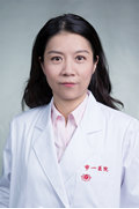
· Name: Zhu Bijun
· Professional Title: Associate Chief Physician
· Specialties:
Phacoemulsification operation for cataract, extracapsular extraction operation and operations of artificial lens implantation and replacement
· Department: Vision Recovery Center
· Appointment
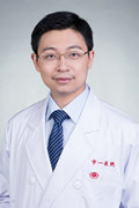
· Name: Sun Tao
· Professional Title: Associate Chief Physician, Master's Supervisor
· Specialties:
Laser and surgical treatment of fundus diseases such as retinal detachment and diabetic retinopathy
· Department: Vision Recovery Center
· Appointment
· Appointment
· 5. Discipline Dynamics:
· Focusing on Cutting-edge of Vitreoretinal Surgery: We Hold Gongji Ophthalmology Forum
· During Dec. 13-14, 2014, Gongji Ophthalmology Forum - Summit of Vitreoretinal Surgery and Shanghai Municipal Development Forum of Key Laboratory of Fundus Diseases was held at the Conference Center of the Southern Branch. This conference invited more than 50 top experts in vitreoretinal field from various well-known Ophthalmology Centers nationwide. Over 400 peers of ophthalmology from more than 10 provinces and cities across the nation gathered at our hospital to discuss the development of microsurgery in ophthalmology in the new era. Professor Xu Xun, Deputy President of our hospital and the academic leader of ophthalmology, presided over the opening ceremony and delivered a welcome speech.
· At the beginning of the conference, Professor Zhang Xi, the well-known ophthalmologist of our hospital, introduced the life story of Professor Zhao Dongsheng, a celebrated ophthalmologist of China. All the people present mourned for Mr. Zhao. This conference focused on the latest progress of current international and domestic vitreoretinal surgery and also paid attention on some common problems perplexing the doctors performing the vitreoretinal surgery. Professor Sun Xiaodong and Professor Zheng Zhi of our hospital delivered the keynote speech. The participants jointly discussed the countermeasures for the difficulties of vitreoretinal surgery. The impassioned interaction brought many new concepts and knowledge for them.
· At the same time, a new segment - difficult surgery sharing and discussion session was established at this forum. The session presented people an audio-visual feast on vitreoretinal surgery with new form, rich content, active discussion and high-definition video.
The Department of Ophthalmology Awarded "National Advanced Group of Professional Technicians"
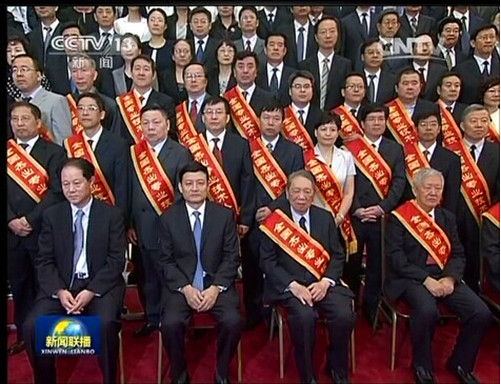
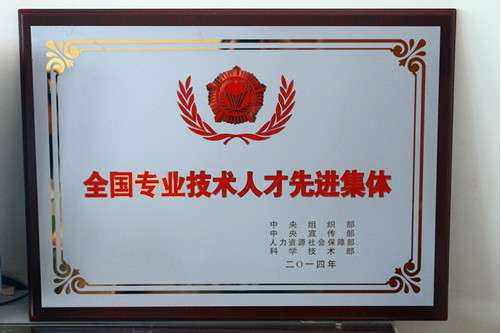
Recently, the Fifth Commending Conference for National Professional Technicians was held in Beijing. The conference commended the scientific and technical workers and groups making outstanding contributions for the development of national science and technology. The Department of Ophthalmology of our hosptial was awarded the "National Advanced Group of Professional Technicians" and Professor Xu Xun attended the commending conference on behalf of the Department of Ophthalmology. At the conference, the Organization Department of the Central Committee, Propaganda Department of Central Committee, Ministry of Human Resources and Social Security and Ministry of Science and Technology commended 99 advanced professional technicians and 96 advanced groups.
Liu Yunshan, Member of the Standing Committee of the Political Bureau of the CPC Central Committee and Member of the Secretariat of the CPC Central Committee, met with the representatives present at the meeting and delivered a speech. Liu Yunshan said that over more than 30 years since the reform and opening-up, our country has witnessed earth-shaking changes, which is inseparable from the development of science and technology as well as professional technicians' concentration on studies and contributions to a large degree. The advanced professional technicians and groups commended today were selected from them. He hoped that the commended comrades would cherish the honor granted by the Party and people and make persistent efforts to set a better example. Each department and unit should earnestly carry out the important instructions on scientific and technological work and talent work given by the General Secretary Xi Jinping and vigorously implement the strategy of rejuvenating the country through science & education and human resource. They should fully stimulate the creative vitality of various professional technicians so as to provide a powerful support for realizing the two 100-year objectives of struggle and the great rejuvenation of Chinese nation.
Professional technicians are the backbone of the talent team of our nation. Enhancing building the team of professional technicians is significant of implementing the strategy of reinvigorating China through human resource development. Since its foundation in 1948, with the efforts of several generations of academic leaders including Professor Zhao Dongsheng, domestic renowned expert in fundus diseases, Professor Zhang Xi and Professor Xu Xun, the Department of Ophthalmology has enjoyed high reputation at home and abroad in the clinical diagnosis & treatment of ocular diseases, scientific research, talent cultivation and academic position. It is especially good at the diagnosis and treatment of retinal detachment, diabetic retinopathy, cornea diseases, strabismus and amblyopia. In addition, it has established a "disease" oriented team medical diagnosis and treatment pattern, which is a progress towards the internationally advanced ophthalmology center.
6.Special Topic on Diseases
Cornea Arcus Senilis Prewarns Hyperlipidemia
By Wei Yi Interviewee/Wu Xingwei, Professor of ophthalmology
In the second half of last year, Mr. Liu found his eyeballs were surrounded by a circle of white ring on the edge. He went to the Department of Ophthalmology of the hospital nearby and the doctor told him it was "cornea arcus senilis" upon inspection. He didn't know whether it needed to be treated.
The expert pointed out that the cornea edge of many persons above the age of 50 would have a circle of grey or white ring about 1~2 mm in width and may widen and darken over years. It is medically called "cornea arcus senilis".
Formerly, people regarded the "cornea arcus senilis" as a common age related physiological deteriorative change; however, according to modern medical research, it is closely related to abnormal blood lipid metabolism or arteriosclerosis. The cornea itself has no blood vessel. Its nutrition comes from the vascular network and aqueous humor on its edge. When there are a high content of lipids such as cholesterol and triglyceride, they will deposit in the cornea tissue and form a grey ring on the edge of the cornea.
A study indicates that "cornea arcus senilis" is found on 65% of the age group of 49. For those with "cornea arcus senilis", the possibility of having total cholesterol level higher than normal level rises 60%; for the seniors without "cornea arcus senilis", their probability of having hypercholesteremia and hypertriglyceridemia lowers 40% and 50%, respectively.
Therefore, the middle-aged and senior friends should pay attention to the "cornea arcus senilis" as it may signify hyperlipidemia or atherosclerosis. As hyperlipidemia can cause atherosclerosis which severely threatens the health of the senior and the cerebral thrombosis, cerebral infarction and myocardial infarction caused by which have a very high death rate.
"Cornea arcus senilis" is always ignored because it causes no pain or itch, nor does vision will be impaired. Thus, the middle-aged and the senior should look into the mirror and check their eyes.
Expert outpatient service: Morning of Monday, Tuesday, Wednesday (Haining Road 100)
Thursday (New Songjiang Road 650)
Notes for Eye Protection
By Wang Hong
Our children were requested to keep "three ones" since they were young, i.e. keep their eyes one chi (1/3 meter) away from the book; keep the body one fist away from the desk and keep the hand one cun (1/3 decimetre) away from the pen point.
In order they may get rid of the glasses, the parents should advise them repeatedly so that they may form good habits.
Don't Use Eyes for Long
The students now have a great pressure on their schoolwork, so study at night is very common. However, please have a 10-minute rest after continuously reading books and doing homework for one hour and look far into the distance to prevent persistent tension of inner and outer muscle as poor circulation may cause rise of intraocular pressure and spasm, thereby gradually forming shortsightedness.
Don't Read Books under Hard Light Exposure
People who have read books under hard light exposure know that the eyes will have shadow if we read long. This is the after image produced by the hard light on the macula lutea area. If we read books under hard light for long, the intraocular muscle will be adjusted excessively, which may cause and develop shortsightedness. Hard light can harm the retina, especially the macula lutea area, causing decline of visual acuity and even permanent visual deterioration.
Don't Watch TV or Play E-Game for Long
Nowadays, TV set and computer games are both very harmful for the vision. It's easy to cause visual fatigue by watching TV for long. Therefore, it is necessary to control the time of watching TV. Rest your eyes for every 30 min. Or close your eyes or do eye exercises. You'd better go outside and look far into the distance when the advertisement is played.
Don't Read Books When Riding or Walking
We should make full use of every minute in study, but it needs good method. Don't use the little time of riding and walking to show you are studying hard. Your hands will shake when walking and the vehicle will jolt when riding. These may cause continuous tension of the intraocular muscle, which is very likely to give rise to visual fatigue and cyclospasm. Change the bad habit, listen to English tape, radio news or just take a rest instead. It's too late to regret when your eyes are harmed.
Have More Food Beneficial for Your Eyes
Have a balanced diet Always intake the food rich in Vitamin A such as carrot, tomato, spinach or dark green, dark yellow vegetables, egg yolk, liver. They are beneficial for your eyes.
7.Scientific Research and Teaching: (Not Available)